 |
INDIA |
 |
|---|
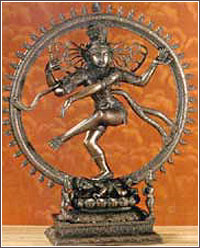
While some individual Indian States or provinces have banned the recreational use of Cannabis. Unlike many other countries that have become infected by what is now known as the American Disease. In India, Medical Cannabis was never outlawed and in fact it is still considered an integrated part of their modern-day Ayurvedic (native to Indian) Medical system. As such all Indian pharmaceutical students, to this day, learn about the properties of and the proper dispensing methods of Cannabis.
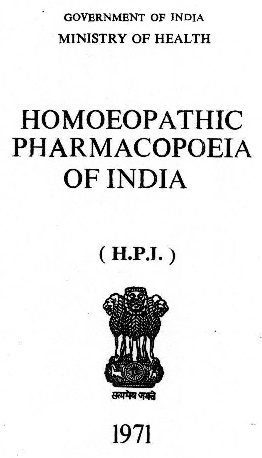

OFFICIAL PHARMACOPOEIA OF INDIA
To this day Cannabis is still officially recognized in the official Indian government's pharmacopoeia. According to the [Non-Governmental] Indian Materia Medica,[1] in 1941 Cannabis was recommended for treating the following ailments:
"Uses.--- are prescribed by Hakims and Vaidyas in bowel complaints and recommended as appetizers, as nervous stimulants and as a source of great staying-power under severe exertion or fatigue. Leaves make a good snuff for deterging the brain ; their juice applied to the head removes dandruff and vermin ; dropped into the ear it allays pain and destroys worms ; it checks the discharge in diarrhea and gonorrhea. Powder of the leaves applied to fresh wounds promotes granulation ; a poultice of the plant is applied to local inflammations, erysipelas, neuralgia, hemorrhoids, etc., as an anodyne or sedative. The dose of the leaves is 40 grains internally. Externally, a poultice of the fresh bruised leaves is useful in affections of the eye with photophobia ; also applied to relieve pain and swelling in orchitis. The concentrated resin exudate (resinous matter) extracted from the leaves and flowering tops or agglutinated spikes of C. sativa, and known as nasha or charas which form the active principle when collected separately, is used to produce sleep in cases of sleeplessness, in which opium is contraindicated ; it is valuable in preventing and curing sick-headaches, neuralgias, migraine (malarial and periodical), valuable in acute mania, whooping cough, asthma, dysuria and in relieving pain in dysmenorrheal and menorrhagia and pain of the last stages of phthisis ; it increases appetite. It does not produce loss of appetite or constipation like opium. For asthma and tetanus the dose of the extract is from 1/4 to 2 grains ; the leaves powdered, mixed with sugar and well fried in ghee and with black pepper added are administered in chronic diarrhea ; with poppy seeds the extract is given in dysentery ; with asafoetida it is given in hysteria. In cases of chronic colic wonderful effect is produced by the administration of 1 grain of the extract in combination with 1/4 grain of ipecacuanha. In dysentery about half a drachm of dried tender leaves mixed with a little sugar and black pepper powder is a well-known and successful remedy ; the tincture of the British Pharmacopoeia is also used in 15 to 20 minim doses three time a day especially in acute dysentery ; combined with belladonna it is given in whooping cough, infantile convulsions, hepatic and renal colic, tetanus and hydrophobia. Oil extracted from the seeds is used for rubbing in rheumatism. Paste applied to the head relieves dandruff and vermin". . . [MORE]

|
INDIAN REEFER MADNESS ERA - MYTH INFORMATION |
 |
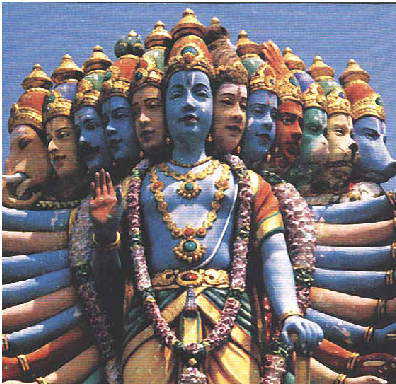
LEGEND(s) have it that a long time ago (around 6,000-BC being a good estimate), a Vedic religious figure looked about him and saw much suffering from illnesses and diseases. He therefore went to the Gods and pleaded with them for help. Indra (a kind of queen of the Gods) heard his pleas, had pity on him and so taught him the medical knowledge of the Ayurveda (pronounced "I-your-Bay-da"), India's system of holistic and herbal medicine which still exists to this day. He thus became the world's first (human) medical doctor, who in turned trained other doctors, who in turn trained other doctors etc., etc.
Humm! A good story, but recalling that this chapter is meant primarily for use by Active News-Media Reporters, who need (how shall I say it), a little more reliable documentation etc., and unfortunately as the Goddess Indra doesn't seem to want to come down and confirm the story, well (again, how shall we put it) we will have to find other sources of documentation.
Recalling that there are three main (sub) species of the Hemp plant.
- Cannabis Ruderalis (Central Asia, Siberia) which only grows to a height of 3 feet (if you're lucky). -- While its small flower tops do have some of the medically active ingredient, in general it is considered cattle fodder.
- Cannabis Sativa: Found naturally in Europe and parts of North Africa. It can grow to a height of over 18 Feet. And this is important, because it is long stocks contain the hard strands which can be used to make rope, cloth etc., however its flowering tops contain little active medical properties.
- Cannabis Indica: Which is naturally found in northern India, and some say parts of China, grows to a height of about 4 feet, but whose flowering tops contain resins with many useful medical properties.
THE GREAT MYSTERY
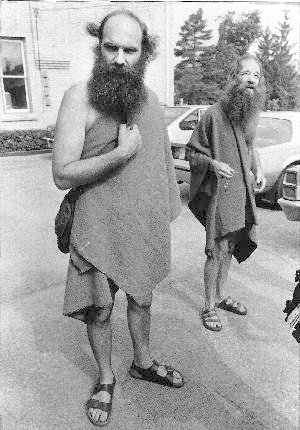
This much is known. Sometime around the 3rd Century BC, a vast civilization (known as the Indus Valley Civilization) came into being. We know that they had a written language because we have been able to find bits and pieces of their writings. Unfortunately, today, no one knows how to read it, so we don’t know that much about them. However, we do know from cruciform clay tables found in Mesopotamia that there was communication as well as trade between the two civilizations. Thus, if the legends are true, it would have been them to whom the Gods first taught the arts of medicine.
Now let’s move to the year (~)1700-BC, and --- COLLAPSE, the whole civilization simply disappeared. Weird, I know, but as anyone who has read Jarred Diamond’s works on the subject knows, things like that just happened every now and then. And unfortunately for us today, with them (again we can’t read their old text books), went their medical knowledge. Did they make use of Medical Cannabis? We may never know.
However, from archeological evidence, it is known that around 1,200-BC, a new group of peoples (known to anthropologists as the Aryans or the civilized ones) moved into the area. They are believed to have originally spoken a language which we now refer to as Sanskrit, and we also know that by 1,000-BC these people had developed an early form of writing. In fact, the very first of the Veda’s (equivalent to the Hindu Bible), was first set to print at around this time.
But now enters the mystery! In the words of Daniel Boorstin:
"Scholars of India are puzzled by why their culture, so ancient, so rich in sculpture and architecture, in works of mythical and romantic literature, should have been so lacking in critical historical writings. Some suggest that the ancients Indian works of history written in Sanskrit may, for still unexplained reasons, have suffered wholesale destruction. A more plausible explanation is that they never existed." ---[book] The Discoverers by Daniel BoorstinThat’s right, NO WRITING --- For a period stretching from around 1,000-BC to about 550-AD, a peoples that had the ability to Read + Write, (presumably) chose not to do so. Or so most scholars on the subject would have us believe.
However, I for one disagree. As stated elsewhere, one of the first things that ALL civilizations do upon acquiring the ability to read and write is to begin putting their medical knowledge onto print. And while No Proof, is presented here (I have none), still we know that human nature is a universal entity. And let’s face facts, what society of humans isn’t interested in good medical healthcare? Thus (at least this author), is of the belief that such records must have and did exist in the past. But, therein lays the mystery. If so, then where are they? How are we to explain this unusual "Quirk" of history? And when exactly were the first uses of Medicinal Cannabis made?
|
However, I for one disagree. Granted Mr. Boorstin is one the most highly respected historians, YET on this matter, he has to be wrong. As stated elsewhere, one of the first things that ALL civilizations do upon acquiring the ability to read and write is to begin putting their medical knowledge unto print. And while I personally can provide No Proof to contradict Mr. Boorstin's statements, still his statements must be wrong, they contradict all known human behavior. Just show me one subway, or one large city that doesn’t have dirty pictures or graffiti written up on the walls. Show me just one. And you expect me to believe that no one wrote anything for over a thousand years -- man give me a break. OK, so where are these missing books --- I don’t know, but I know they must exist somewhere. In the mean-time, here are some facts that should be taken into account.
|
In trying to find answers to our original question, perpaps it would be best to work backwards in time, creating a sort of backwards time line.
W.B. O’Shaughnessy - 1830’s:
We know by ALL accounts that W.B. O’Shaughnessy, who would become the man most credited with introducing the uses of Medical Cannabis into Western Medicine, was himself taught about its uses by Local Indian Physicians. Thus we can safely state it was already well in (Ayurvedic) Medical use before that time.
Garcia Da Orta - 1530’s:

There are some who claim that it was a Portuguese Physician, Garcia Da Orta and NOT O’Shaughnessy, who deserves the credit for introducing the medical properties of Cannabis into Western Medicine. And in truth in 1534, after fleeing the persecution of the Portuguese Inquisition (he was Jewish), he did make his way to India and (after years of studying local medicines) succeeded in 1565 in publishing a book “Colloquies on the Simples and Drugs of India,” a sort of Materia Medica of Indian Drugs. A complete chapter is devoted to the subject of “BANGUE”, the term he used for Medical Cannabis. The book [3][4], although originally written in Portuguese, was soon translated into Latin and only one or two centuries later into English.
However, this author for one must question the value of his contribution to the subject. While true Garcia Da Orta:
- Was a Physician
- Did physically go to India
- Did study Indian medicine
- AND DID write a book, four pages of which are devoted to the subject.
But be that as it may, his book does give some level of proof (in the Western sense) that Medical Cannabis was well integrated into India’s Ayruvedic Medical system at and before the mid-16th Century.
PRE-1534 INDIAN LITERATURE:
However, in order to go back further in time, we must make use of local Indian medical literature. But in order to do so, we must first acknowledge, or at least bring up some very interesting cultural differences between the West and India.
- INDIA's NON-CONCEPT OF TIME:
For westerners, where calendars and watches are all a part of our everyday lives, it is very natural for us to think in terms of time. Here it is taken for granted that we all know what date we were born, what date our children were born, etc., we even think it's natural to know exactly what hour we must show up for work, etc. But unfortunately, the concept of time doesn’t seem to be very universal among most humans. In fact in most human cultures, the very concept of time, as we know it, seems to be an --- “out and out inconceivability.” And to our great misfortune, India seems to have had one of these cultures.
This cultural lack of regard for dates, now has created an absolute horror story for modern day scholars --- with no copyright dates of any kind, no one knows exactly what was written when. The only way we have of dating any of their medical textbooks is to take into account mentioned names of well known monarchs or events. Example: Such and such is the son of so and so, who served King such and such etc., and as we know that this king was born around this time, therefore, the author must have lived around, etc., etc. -- Just keep in mind that ALL pre-17th Century dates are estimated guesses at best.
- ABOUT SANSKRIT - The Dead Writing Language:
Like Latin, Sanskrit long ago became a dead language spoken naturally by very few. And like Latin, (for a people that had no other unifying language), Sanskrit was used throughout India by its educated elite as a literally or writing language.
However, unlike Latin, Sanskrit was already a dead language LONG before it began to be used as such. Originally, it was probably one of the languages introduced by the incoming Aryans. But by around 1,000-BC when it was first put into any kind of written form; --- It was already a dead language who few could actually speak.
Thus, unlike Latin, Sanskrit, right from the get-go, was seen ONLY as a literally or written language used solely by the educated elite. It was they who used it to write the Vedas and due mostly to a lack of any other India script, just about everything else. Just remember, the average person out on the street (in India) can’t understand it.
- WHY ALL THE FUNNY NAMES
I hate to sound like a cultural supremist, but even if Dr. O’Shaughnessy were not remembered for anything else. He would still win a footnote in history as the man who; ---after noting that India had probably some 300 major languages, instituted a policy (still used to this day) --- First you learn English, then you go to medical school. [Thank God]
However, by the time O’Shaughnessy went to India, it was already too late, every language group had its own word(s) for Medical Cannabis, which has created mass confusion for scholars and antique Medical Cannabis collectors to this very day.
- THE LACK OF THE PRINTING PRESS
We in the west take the concept of the printed book for granted. If one needs to know something, we simply take a trip to the local book store or library. However, we must recall that Gutenberg only invented the printed press sometime around 1450 meaning, few books were published before then. And believe it or not, those (handwritten) books that did exist were often-times so expensive that they were literally chained to the walls or kept under lock and key. Let’s just say that things were not conducive for neither book-readers or book-writers.
And unfortunately for scholars of Indian history, due mostly to its geographical isolation from the west, the printing press did not make its way onto the India subcontinent until well into the 17th Century. A situation that may help to explain the negligible amount of pre-18th Century Indian medical literature.
- ABOUT THE VEDA(s)
Simply put, one can think of them as the Hindu Bible, but with some slight differences. Hindu’s, unlike Christians seemed to have more than one God, and unfortunately some of them don’t seem to like one another. Which makes writing down the Hindu equivalent of the Ten Commandments, or other specifics a little hard to do.
Additionally, unlike the Christian scriptures which seemed to have been written in stone some time back, the Hindu Veda’s were an on-going thing. Remembering that they originally came down via the oral tradition, sages (Indian holy-men of wisdom) were expected to add a little something into their scriptures. Thus, the Veda’s must be seen as an ongoing literary effort, one that would grow to include, Law, social behavior, magic etc., but most important (and something that is unique to India) Medicine. That’s right, Medicine -- and it included Medical Cannabis.
Although taken from the oral tradition, it seems that the first of the Hindu Veda’s was not actually put down into writing until sometime around 1,000 BC. However, the last of its major works (which include the Medical Sciences) seems not to have been written down until well after 500-AD or thereabouts. This medical system (found mostly in the Atharva-Veda) is now known as Ayurvedic medicine, which includes numerous herbal prescriptions [including Medical Cannabis] and some magical spells for curing diseases etc.
Here however, note once again, that Indian Culture had an almost total lack of regard for dates, thus the term “about” is almost always used. But be that as it may, let’s look specifically at what [documentable] native Indian literature physically is known to exist:
|
DATE |
TITLE |
AUTHOR |
FOOTNOTES |
| 9-10th Century | Abhidanaratnamala or Sadrasanighantu | UNKNOWN | Anonymous lexicon that only gives synonyms of medical substances -- between 800 - 1000 AD] - Noteworthy names of medicinal plants are . . . vijaya (=bhangi, 4.74a) |
| 11th Century | Dhanvantariyanighantu | UNKNOWN | A Lexicon of herbal medicines which included the medical properties of cannabis such as stimulation of digestion and induction of slow speech. Aphrodisiac and sleep-inducing qualities were also listed. --- Vijaya (I.130-131) is regarded as a variety of meda |
| 11-16th Century | Saragadharasmhita | UNKNOWN | Cannabis (bhanga, vijaya) rather often occurs in prescriptions (I.4.20; 7.203; II.6.72; 12.256) |
| 12th Century |
Gadanigraha
|
Solhala | Composed of two parts, a collection of formulae arranged according to several types of pharmaceutical preparations. And a text. Chapter of Prayogakhanda . . . Noteworthy drugs . . . vijaya (320) |
| 1159 AD | Paryayaratnamala or Ratnamala | Madhava Bhisaj | A lexicon -- Bhanga |
| 12-13th Century | Anandakanda | UNKNOWN | This text lists several types of cannabis medicines (curna, modaka, vatika, leha, paka, dugdhapaka, kvatha), used for a variety of indications including erectile dysfunction. The terms ganja in the vijayakalpa |
| 12-13th Century | Rasendracudamani | Somadeva | A treastise on alchemy and iatrochemistry. - The descriptions of the sixty-four divyausadhis of chapter six are important and have influenced later authors. The group consits of . . . vijaya . . |
| 13th Century | Kalyanakaraka | Ugraditya | A medical treatise by a Jain author. - Remarkable names of medicinal plants used in the Kalyanakaraka are . . . . Bhanga or bhanga (16.66) |
| 13th Century | Madhavadravyaguna or Bhavsvabhavavada | Madhavakavi | Noteworthy is the description of the following drugs . . bhanga (vividhausadhi 63) |
| 13-14th Century | Gorakasamhita | Goraksanatha | A text that deals with alchemy. -- Chapter 7, plants used in alchemy . . . vijaya (72-73) |
| Jan 8, 1375 | Madanapalanighatu + others | Madanapala | Special features - bhanga (1.333) |
| 14th Century | Sarngadharasamhita | Sarngadhara | Sanskrit medical literature of the mediaeval period - Cannabis (bhanga, vijaya) rather often occurs in prescriptions (I.4.20; 7.203; II.6.72; 12.256) |
| 14-15th Century | Rasarara | Govinda or Govindacarya | Is a treatise almost entirely devoted to alchemy. - Plants used in alchemical operations are . . . vijaya (21.11-59) |
| 15th Century | Pathyapathyaviniscaya | UNKNOWN | A compilation on beneficial and harmful therapeutic measures, diet, etc., in various diseases. |
| 1400-1450 AD | Pathyapathyavibodhaka | Kaiyadeva | Some remarkable items of the materia medica are a. . . vijaya |
| 15th Century | Rasaratnakara | Niyanatha | An imprtant treatise on alchemy and iatrochmistry - the group of divine drugs (divyausadhi) is composed of . . . vijaya . . . (2.14cd-28) |
| 15-16th Century | Bhavaprakasa | Bhavamisra | Noteworthy among the medicinal plants and other substances found in the Bhavaprakasanighantu are .. . Bhanga (haritakyadi 233-234) |
| 15-16th Century | Rasaratnasamuccaya | Vagbhata | Some noteworthy names of plants and substances of vegetable origin are . . . ganja (15.76) |
| 16th Century | Rasaprakaasasudhakara | Yasodhara | A treatise devoted to alchemy and iatrochemistry - vijaya . . (9.30cd-39) |
| 16-20th Century | Siddhabhesajamanimala | Krsnarama | Noteworthy medicinal substances -- ganja (4.914) |
| 17th Century | Vaidyakautubha | Mevaramamisra | The divyausadhis enumerated are . . . Vijaya (14.13-22) |
| 17th Century | Arkaprakasa | UNKNOWN | A monograph on preparation of an arka. It was written as a dialogue betwwen Ravana and his wife Mandodari. -- The preparation of an arka from hemp (bhanga) and . . . (2.98-99) |
| 1885 | Rasajalanidhi | Bhudeva Devasarman | The chapter on upavisas enumerates many names of the poisonous plants described; . . . the resin from the flowers of hemp (i.e. hashish) is called ganjarasa (III 351). (III, 330-360) |
| 20th Century | Rasmira | Tryambakanath Sarma | A treatise that lays emphasis on the medicinal uses of alchemical products. |
| 20th Century | Lankabhaisajyamanimala | Aryadasa Kumarasimha | Chapter on poisons . . . vijaya |
| 1926 | Rasendrapurana | Ramaprasada | vijaya . . . (30.184--185) - The plants, plant products and other substances belonging to the abbrakamarakagana are . . . . vijaya . . (7.88--92) |
| 1952 | Rasendrasambhava | Visvanatha Dvivedi | A treatise that mainly deals with iatrochemistry. - Section five -- deals with poisonous substances of mineral, vegetable and animal origin, their varieties, properties, purification, etc., . . . jaya (=bhanga) . . . (665-741) |
| 20th Century | Rasarajasundara | Dattarama Caube | bhanga (226) - the divyausadhis are . . . vijaya |
CONCLUSIONS:
Once more, in all certainty, there are far older Indian medical texts out there, just waiting to be found. But for now [In a Western Sense] we can only trace or document India’s medical use of Cannabis back to around 700-AD. Still a long, long time, but not quite what we were expecting.
And while true, the Hemp plant is mentioned in some of the Veda’s as far back as 1,000-BC, it seems to be mention only in ritualistic (non-medical) ways.” Example:
Great if you're talking about Industrial hemp or food stuffs, or whatever, but has nothing what-so-ever to do with its medical uses. Thus we find ourselves with two possible answers to our original question. If you are a devote hindu, your faith establishes the date as being around 6,000-BC, when the Goddess Indira first taught it’s medical uses to humans.
However, if you are a devout Christian, and require more suitable documentation;
Then the year 550-AD, will probably, be the earliest such date. In terms of Western Documentation, the following article originally published in the 19th Century Journal [The Indian Antiquary] entitled “The Hemp Plant in Sanskrit and Hindi Literature,” contains a great deal of useful information on the subject of Cannabis and Indian medical history. [MORE]
MUSEUM WARNING:
Industrial Hemp verses Medical Cannabis: The purpose of this chapter is to present the Antique Cannabis collector with a basic, yet well documented, history of the given subject. And that being of Medical Cannabis - NOT - Industrial Hemp. True archeological evidence established for a fact that the Industrial properties of the Hemp plant go back a long, long time (a real long, long time), but so what! What does this have to do with Antique Cannabis Medicines? As Stan Lee would say, "Nufsaid."
FOOTNOTES
[1]- Indian Materia Medica by K.M. Nadkarni's (1941)
[2]- Picture of Two Holy Men, (not from India, but they do look about right]
[3]- Colloquies on the simples & drugs of India
[4]- Although Garcia Da Orta wrote his book long before O’Shanghnessy, still it was O’Shanghnessy who actually brought back samples of Cannabis Indica to England and actively promoted its uses (magazine articles, lectures, pharmaceutical societies etc.) and thus is though of as the West’s father of Medical Cannabis.
[5]- Not exactly sure which Veda this comes from, or the exact words, but the author is sure that it’s in there somewhere.
[6]- The spelling is somewhat of a guess, but it runs something like as shown.
WANT TO KNOW MORE:
=====================
Due to space / download time considerations, only selected materials are displayed. If you would like to obtain more information, feel free to contact the museum. All our material is available (at cost) on CD-Rom format. Please contact:
CONTACT PAGE
INDIA Back to the Last Section |
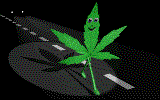 BACK TO CHAPTER 2 |
INDIA On to the Next Section |